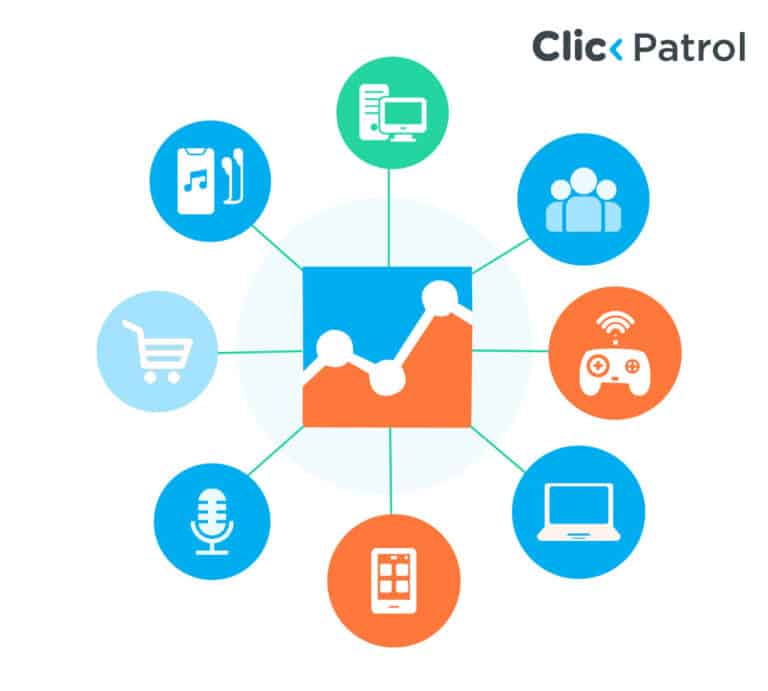
Understanding WooCommerce and Click Fraud
Abisola Tanzako | Apr 22, 2024

Table of Contents
- What is WooCommerce?
- How WooCommerce works
- What WooCommerce has to offer
- What is Click Fraud?
- Forms of Click Fraud
- The relationship between WooCommerce and Click Fraud
- The impact of Click Fraud on WooCommerce
- 1. Depletion of advertising budget:
- 2. Distorted data and analytics:
- 3. Advertising performance:
- 4. Reputational harm:
- 5. Wasted time and resources:
- How to mitigate Click Fraud on WooCommerce
- Conclusion
E-commerce platforms and online advertising have emerged as crucial components of business strategies. Among these, WooCommerce stands out as a leading eCommerce platform. It gives businesses the tools to establish and manage their online stores effectively. WooCommerce offers a vast solution for selling products online, catering to various businesses.
However, the digital marketplace has challenges. One such challenge is click fraud, a prevalent form of online fraud. Click fraud involves manipulating pay-per-click advertising through invalid clicks, leading to inflated business costs. Like any other e-commerce platform found on the internet, WooCommerce stores serve as virtual marketplaces where businesses can display and market their products or services for sale, susceptible to click fraud.
Invalid click activity can increase advertising costs without directly increasing customer engagement or sales. It can also skew marketing data, making it difficult for businesses to make informed decisions. This article will offer an in-depth exploration of the relationship between WooCommerce and click fraud. It will also highlight the potential outcome of click fraud on your WooCommerce store and provide strategies to safeguard your online business from such deceptive practices.
What is WooCommerce?
WooCommerce is a flexible, open-source e-commerce platform specifically designed for WordPress. It caters to the needs of small and medium-sized online retailers. It allows businesses to either construct an online store from the ground up or incorporate shopping features into an existing WordPress site, transforming their WordPress site into a fully-fledged e-commerce storefront.
WooCommerce is renowned for its intuitive interface and extensive customization options, making it one of the most reliable e-commerce platforms for building prosperous businesses. It provides advanced customization, sophisticated selling features, and dedicated support to assist established merchants in their growth. With a track record of over 3.9 million online stores built, it’s no surprise that 23% of the top 1 million eCommerce sites are constructed with WooCommerce. Furthermore, WordPress, the foundation of WooCommerce, powers 43% of the web, attesting to its widespread use and trustworthiness.
How WooCommerce works
WooCommerce serves as a complimentary, open-source plugin designed to seamlessly integrate with WordPress websites, thereby enabling the conversion of a standard site into a robust online store or the incorporation of an e-commerce platform into an existing website. It integrates a shopping platform on top of the WordPress content management system, providing a comprehensive suite of features. These include a checkout system, product pages, and a dedicated database for managing the store’s inventory.
WooCommerce is designed to accommodate various products, including virtual offerings such as coaching sessions, consulting services, or web design packages. Such versatility empowers businesses to accommodate a broad spectrum of customers and fulfill diverse requirements. In addition to facilitating sales, WooCommerce also provides good management tools. These include features for handling payments, tracking orders, monitoring stock levels, and overseeing shipments. These capabilities enable businesses to manage their online operations efficiently and effectively.
WooCommerce is mobile-friendly, ensuring customers can easily shop from any device. It also offers a wide selection of free and premium themes, allowing businesses to customize their online storefronts to reflect their brand identity.
What WooCommerce has to offer
WooCommerce offers many features designed to help businesses succeed in managing their online marketplace. These include:
- Product management: WooCommer offers robust product management capabilities, allowing businesses to add, categorize, and manage their products easily. This includes both physical and digital goods, providing flexibility for a wide range of companies.
- Order and shipping handling: WooCommerce simplifies order and shipping handling. It automates the process from placing an order to shipping it, ensuring a smooth customer experience.
- Customer account area: A customer account area is also included in the WooCommerce offerings, where customers can manage their personal information, view order history, and track their shipments.
- Tax settings: WooCommerce also provides configurable tax settings, allowing businesses to comply with local tax laws and regulations.
- Payment system integrations: Various payment systems are integrated to offer customers multiple payment options and enhance the checkout experience.
- Inventory management: This feature allows businesses to maintain accurate inventory records, ensuring they can efficiently fulfill customer orders without running out of stock. With real-time notifications, WooCommerce empowers enterprises to make informed restocking and inventory replenishment decisions, optimizing their operations for greater efficiency and customer satisfaction.
- Analytics and reporting tools: The platform also provides analytics and reporting tools, giving businesses valuable insights into their sales, customers, and products. These insights are a compass for decision-making, empowering companies to thrive and excel in the competitive online marketplace.
- Security: Finally, regular updates and the backing of a large community ensure that WooCommerce remains secure and consistently updated.
What is Click Fraud?
Click fraud refers to fraudulent activity where in pay-per-click online advertising. In this dishonest practice, individuals or automated scripts imitate legitimate users and click on ads to inflate the advertiser’s costs or the host website’s profits. Click fraud is when a competitor computes a program or generates scripts to exploit online advertisers by repeatedly clicking on a (PPC) pay-per-click to create fraudulent charges.
Click fraud can potentially boost earnings for publishers, ad networks, and websites; alternatively, it can deplete advertising budgets for click-based campaigns. In pay-per-click (PPC) advertising, for instance, website owners get paid according to the number of times users click on their advertisements. E-commerce companies that depend on website traffic to make sales may experience a loss of revenue due to click fraud.
Forms of Click Fraud
There are several forms of click fraud, and each has its purpose and method, making it a complex issue for businesses to tackle.
- One common form is ad fraud, where website operators generate fraudulent clicks on their site’s pay-per-click (PPC) ads.
- Another form involves artificially boosting search engine rankings by generating fake clicks on competitors’ links in organic search results.
- Click fraud can also occur when fraudsters generate fake clicks on ads on their websites or third-party platforms to profit from the ad budget.
- In some cases, fraudsters might even leave fake comments on social media, attempting to harm a brand’s reputation.
The relationship between WooCommerce and Click Fraud
While click fraud does not directly steal from your WooCommerce store, it can indirectly yet significantly impact your business. This deceptive practice involves invalid clicks on your online store’s advertisements. These illegitimate interactions can rapidly deplete your advertising budget without yielding genuine leads or sales. This means that your investment in advertising needs to translate into tangible benefits, draining your resources.
Additionally, click fraud can lead to inflated website traffic statistics. This artificial surge in traffic can distort marketing data, making it challenging to accurately assess campaigns’ effectiveness. Precise data is essential for informed decision-making about marketing strategies. However, click fraud can undermine this process, leading to misguided strategies based on skewed data. While click fraud may not directly rob your WooCommerce store, its indirect effects can significantly hamper your business operations and growth.
Can Click Fraud occur on WooCommerce?
Click fraud is a potential risk for WooCommerce stores. If a store employs pay-per-click advertisements to draw in customers, it can become a target for click fraud. This deceptive practice involves invalid clicks on the ads, which can significantly increase advertising costs.
However, these additional costs do not correspond to increased genuine customer engagement. Instead, they represent a financial drain on the business, as the increased expenditure on advertising does not translate into increased sales or customer interactions. Therefore, while click fraud does not directly affect the operation of the WooCommerce platform, it can substantially indirectly impact the financial health and marketing effectiveness of businesses using WooCommerce.
The impact of Click Fraud on WooCommerce
The impact of click fraud on WooCommerce, or any other e-commerce platform, can be significant and diverse, affecting various aspects of the business.
1. Depletion of advertising budget:
Invalid clicks that don’t lead to actual sales can exhaust your advertising budget, reducing your ad campaigns’ return on investment (ROI) and making your marketing efforts less efficient.
2. Distorted data and analytics:
It artificially boosts website traffic statistics and misrepresents conversion rates, making it challenging to gauge the effectiveness of your marketing initiatives and make future data-driven decisions accurately.
3. Advertising performance:
If advertising platforms suspect click fraud on your campaigns, they might limit your ad visibility or even suspend your account, significantly affecting your ability to reach genuine customers.
4. Reputational harm:
A website affected by click fraud might be perceived as less reliable by potential customers, negatively influencing your brand’s perception and the effectiveness of your efforts to acquire new customers.
5. Wasted time and resources:
The time and resources spent investigating and addressing click fraud could be better spent focusing on genuine customer interactions and optimizing your marketing strategy.
How to mitigate Click Fraud on WooCommerce
There are numerous methods for reducing click fraud on WooCommerce. Here are a few:
1. Click fraud detection software:
Click fraud detection software such as ClickPatrol are crucial tools in digital advertising; they identify and block illegitimate clicks, safeguarding your advertising budget from invalid activities. This ensures that your budget is utilized effectively, targeting genuine customers and yielding better returns on investment.
2. Continuous observation:
One can detect any unusual or potentially harmful activities by consistently examining click reports. This method is crucial for maintaining online security.
3. Collaborate with trustworthy advertising networks:
Selecting advertising platforms with solid measures to prevent click fraud is essential. This ensures the integrity and effectiveness of your online advertising efforts.
4. Broaden your marketing approach:
It’s not advisable to depend entirely on online advertisements for your marketing strategy. Consider delving into other avenues. Such strategies include organic search engine optimization (SEO) and social media marketing. Both can broaden your reach and draw in genuine customers, supporting your brand’s visibility and fostering meaningful engagement.
5. Implementing IP exclusions:
If you identify specific IP addresses as the origin of invalid clicks, you can exclude them. This will prevent these IP addresses from viewing your brand’s advertisements, safeguarding your online advertising campaign from potential threats.
Conclusion
While WooCommerce empowers you to build a thriving online store, businesses must be aware of potential risks like click fraud. By understanding these aspects, companies can effectively navigate the digital marketplace, optimizing their online presence while protecting their interests. Businesses must stay vigilant, monitor their ad traffic, and employ strategies to detect and prevent click fraud. This way, they can ensure the integrity of their online operations, protect their advertising budget, and ensure their marketing efforts reach real customers and continue to thrive in the digital marketplace.
FAQs
Q .1 Does WooCommerce have built-in click fraud protection?
Yes, WooCommerce does have built-in click fraud protection measures. It offers the WooCommerce Anti-Fraud plugin, which detects fraudulent activity each time an order is placed through your store, provides an Order Risk Score, and suggests risky order advice.
Q. 2 How can I identify click fraud on my own?
You can identify click fraud independently by vigilance and understanding your ad traffic patterns. You should monitor for consistent ad traffic from specific IP addresses without conversions and performance data inconsistencies like higher bounce rates, a sudden increase in ad spend, or lower site time. Tools like Google Ads’ Click Fraud Report can help identify patterns of suspicious activity.
Q. 3 What should I do if my advertising platform suspends my account due to suspected click fraud?
Acting immediately is essential if your advertising platform suspends your account due to suspected click fraud. Review the notification email from the platform to understand the specific reason for suspension. Check the platform’s policies to understand the rules to adhere to when creating and running ads. If the issue concerns payment, settle any outstanding balances and provide proof of payment. Once you’ve addressed the platform, a review request for account reinstatement will be made.
Q. 4 Are there any free click fraud detection tools?
Although some free click fraud detection tools are available, their features or accuracy may be limited. More reliable click fraud detection tools typically require a subscription fee. However, the potential savings from safeguarding your advertising budget can often justify this cost.

